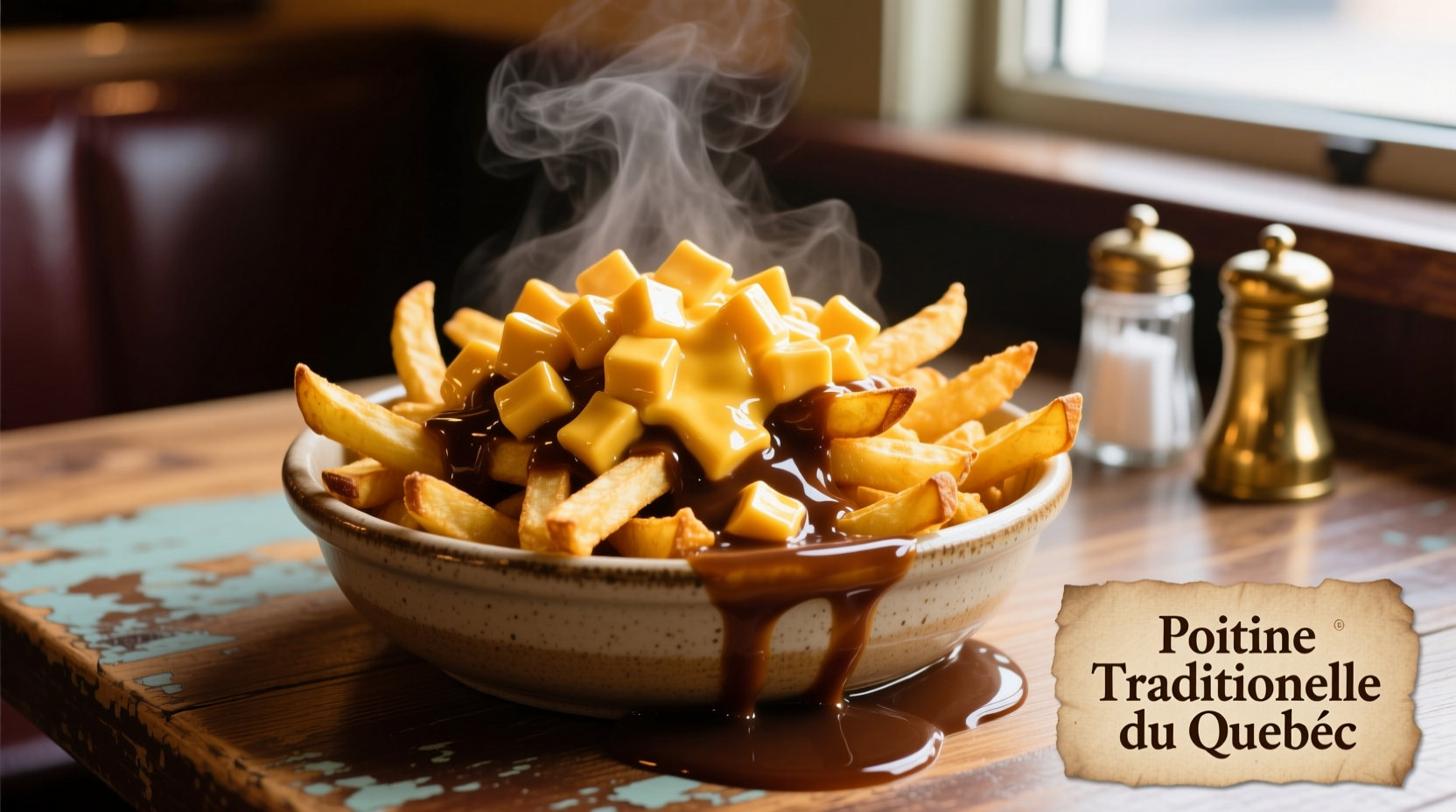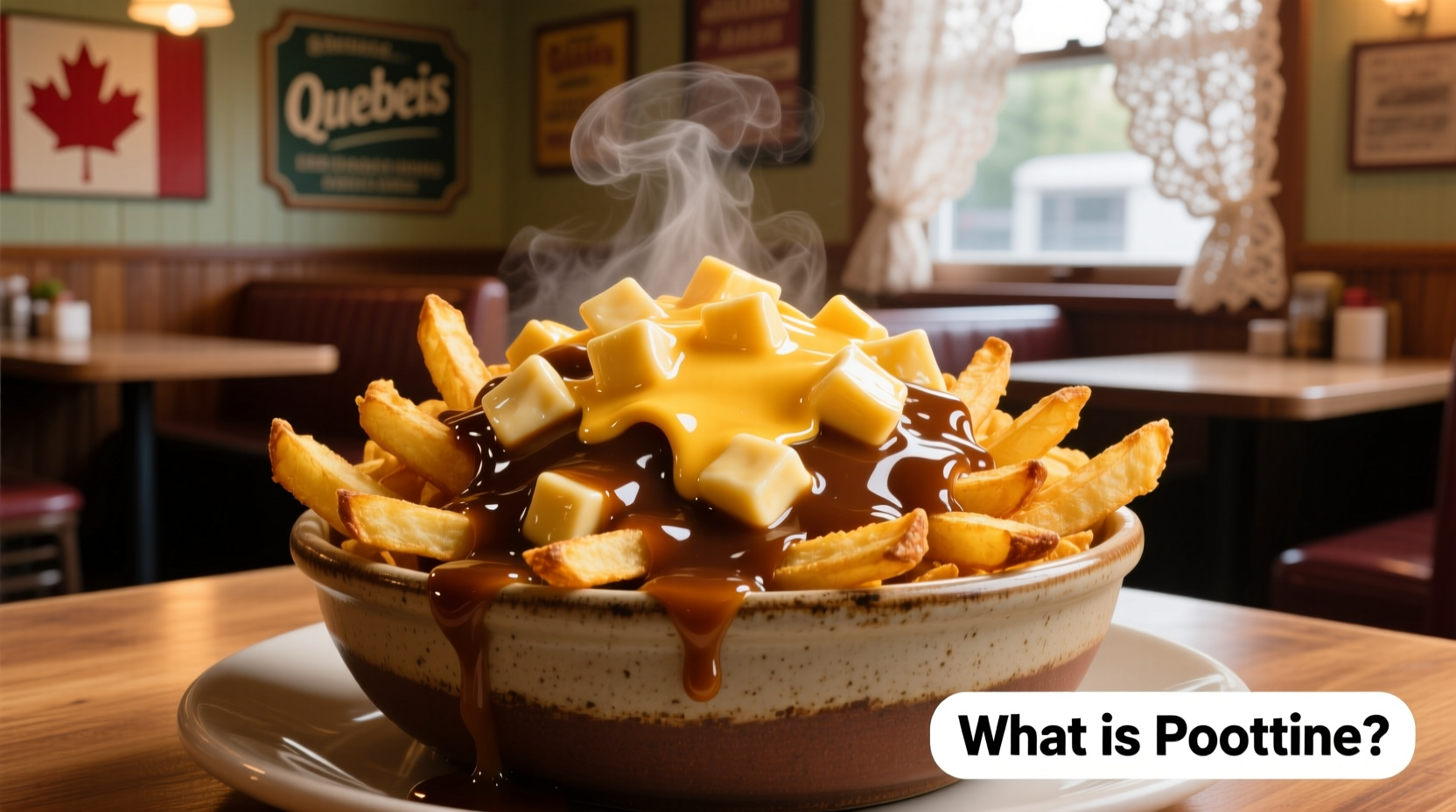Poutine is a Canadian culinary icon originating from rural Quebec in the 1950s, consisting of three essential components: fresh-cut french fries, squeaky cheese curds, and rich brown gravy. This beloved comfort food has evolved from humble diner fare to a nationally recognized dish that represents Quebecois culinary identity.
Discover everything you need to know about Canada's most famous comfort food creation. Whether you're encountering poutine for the first time or seeking authentic preparation methods, this guide delivers the complete story behind those irresistible cheese curd-topped fries swimming in savory gravy. You'll learn the precise ingredients that define authentic poutine, its fascinating evolution from roadside snack to cultural symbol, and where to experience the genuine article.
The Essential Components of Authentic Poutine
True poutine requires three specific elements working in perfect harmony. The magic happens when hot gravy meets fresh cheese curds on just-crispy-enough fries, creating that distinctive "squeak" when bitten. Understanding these components separates authentic poutine from imitations.
| Component | Authentic Requirement | Common Imitations |
|---|---|---|
| Fries | Fresh-cut, double-fried potatoes with crispy exterior and fluffy interior | Pre-frozen shoestring fries or steak-cut fries |
| Cheese Curds | Fresh, room-temperature cheddar curds with characteristic "squeak" | Melted shredded cheese or cold refrigerated curds |
| Gravy | Light beef or chicken-based gravy, never thickened with flour | Heavy brown sauce, mushroom gravy, or gravy with visible flour lumps |
From Diner Experiment to National Treasure: Poutine's Evolution
Poutine's journey from Quebec countryside to international fame follows a clear trajectory that reflects changing Canadian food culture. Historical records and culinary archives document this progression through several distinct phases.
- 1950s: First documented appearance at Fernand Lachance's restaurant in Warwick, Quebec. The "le parfait" (perfect combination) of fries, curds, and gravy was born when a customer requested cheese curds on his fries.
- 1960-1970s: Spread through Quebec's "cabanes à frites" (fry shacks) as working-class comfort food. The term "poutine" (meaning "mess" in Quebec French) became commonly used.
- 1980s: Adoption by Montreal restaurants and appearance on menus beyond Quebec. First poutine festivals begin celebrating the dish.
- 1990s-2000s: Mainstream acceptance across Canada. Major fast-food chains develop their own versions, sparking debates about authenticity.
- 2010s-Present: International recognition with poutine restaurants opening worldwide. UNESCO considers Quebec's culinary traditions, including poutine, for intangible cultural heritage status.
Why Temperature Matters: The Science Behind Perfect Poutine
The magic of authentic poutine depends on precise temperature control between components. When properly executed, the hot gravy (approximately 70°C/158°F) slightly melts the exterior of room-temperature cheese curds (15-20°C/59-68°F) while maintaining their signature squeak. The fries must be hot enough to prevent sogginess but not so hot that they immediately melt the cheese.
Food scientists at McGill University's School of Dietetics and Human Nutrition have studied poutine's unique textural properties, confirming that the "squeak" of fresh cheese curds results from the protein matrix reacting to pressure. This characteristic disappears within 12 hours as the curds age, explaining why authentic poutine requires extremely fresh curds.

Experiencing Authentic Poutine: Context and Considerations
While poutine has gained international popularity, certain contexts enhance or diminish the experience. Understanding these boundaries helps you appreciate poutine as Quebecers do.
Best enjoyed: As a shared meal among friends after outdoor winter activities, at late-night diners following cultural events, or as a celebratory dish during Quebec's winter festivals. The Quebec Ministry of Agriculture, Fisheries and Food recognizes poutine as part of the province's "gastro-cultural heritage," best experienced in its place of origin.
Less appropriate: As a health-conscious meal option (a standard serving contains 700-1,200 calories), during formal dining occasions, or when seeking light refreshment. Nutrition Canada's dietary guidelines note that while poutine provides satisfying comfort, it should be enjoyed in moderation as part of balanced eating patterns.
Where to Find the Most Authentic Poutine
For the genuine article, prioritize establishments that follow Quebec's unofficial poutine standards. The Association des Cabanes à Frites du Québec maintains a directory of certified poutine providers who adhere to traditional preparation methods. Key indicators of authenticity include:
- Fresh cheese curds delivered daily (they should squeak when bitten)
- Fries cut in-house from whole potatoes
- Gravy prepared from scratch without flour-based thickeners
- Assembly method where fries are partially covered with curds, then gravy is poured to melt the cheese slightly
While Montreal's La Banquise has popularized poutine internationally with its 30+ variations, food historians agree that the most authentic versions remain in Quebec's Eastern Townships where the dish originated. The Quebec Culinary Tourism Association reports that over 85% of Quebec residents consider poutine an important part of their cultural identity, with 67% consuming it at least monthly.
Frequently Asked Questions About Poutine
What makes poutine different from regular cheese fries?
Authentic poutine specifically requires fresh cheese curds (not shredded cheese) and a light brown gravy (not sauce). The cheese curds must be at room temperature to maintain their characteristic "squeak" when the hot gravy slightly melts their exterior. Regular cheese fries typically use melted shredded cheese and lack the gravy component that defines poutine.
Where did poutine originate?
Poutine originated in rural Quebec during the late 1950s. The most widely accepted origin story credits Fernand Lachance of Le Lutin Qui Rit in Warwick, Quebec, who created the dish in 1957 when a customer requested cheese curds on his fries. The name "poutine" comes from Quebec French slang meaning "mess," reflecting the dish's appearance.
Why do cheese curds squeak in authentic poutine?
The distinctive "squeak" comes from fresh cheese curds' protein structure. When cheese is freshly made, the protein matrix creates resistance when bitten. Food scientists at McGill University have confirmed this sound disappears within 12-24 hours as the curds age. Authentic poutine requires extremely fresh curds, typically delivered daily to restaurants.
Is poutine considered healthy?
Traditional poutine is a comfort food rather than a health food, with a standard serving containing 700-1,200 calories. Nutrition Canada's dietary guidelines position it as an occasional treat. Some restaurants now offer "light" versions with baked fries and reduced-fat gravy, but food historians note these deviate significantly from the dish's cultural origins as hearty working-class fare.
What's the proper way to eat poutine?
Quebecers traditionally eat poutine with a fork, mixing components as they eat to maintain the ideal temperature balance. The dish should be consumed immediately after preparation while the fries remain crisp and the cheese maintains its texture. Many Quebec restaurants serve poutine in paper boats with metal forks specifically designed for optimal cheese curd retrieval.











 浙公网安备
33010002000092号
浙公网安备
33010002000092号 浙B2-20120091-4
浙B2-20120091-4